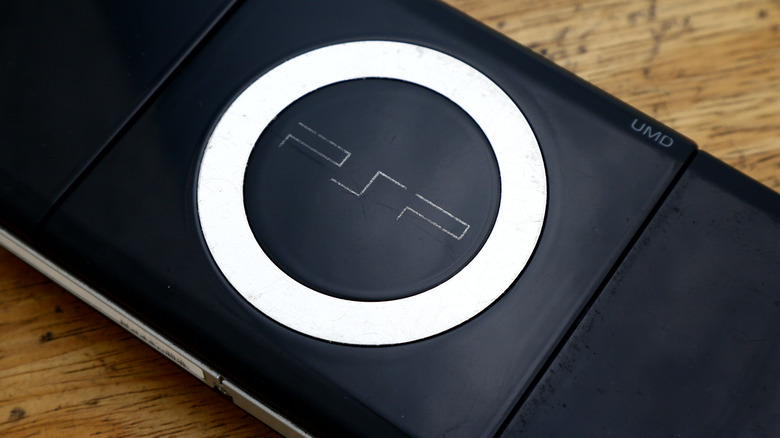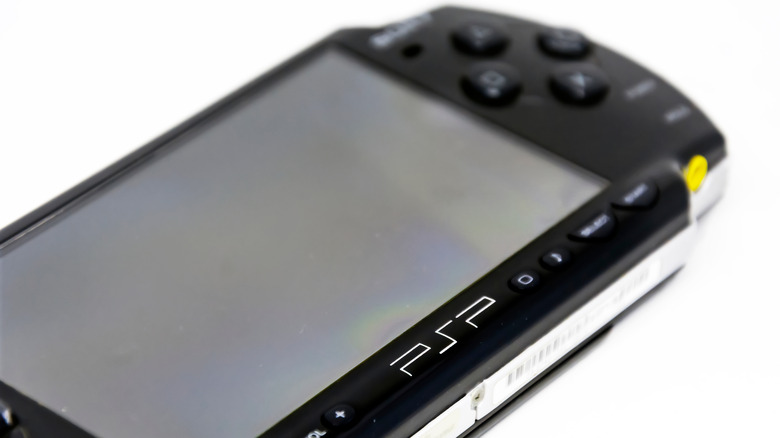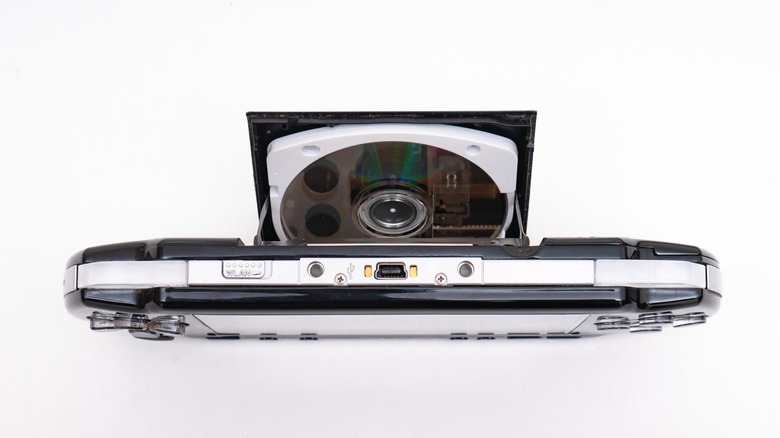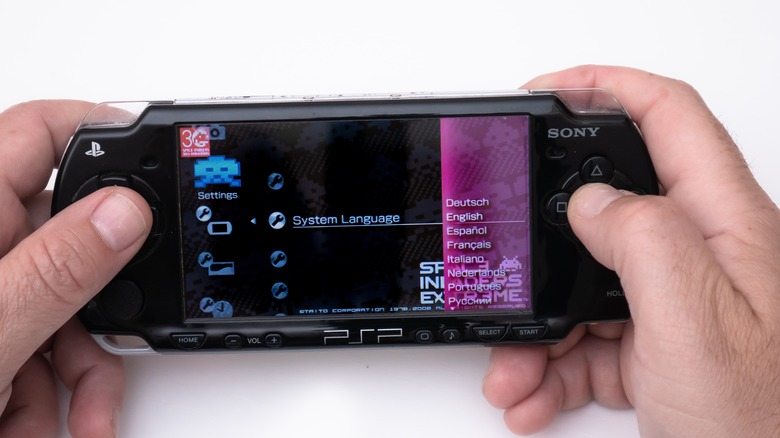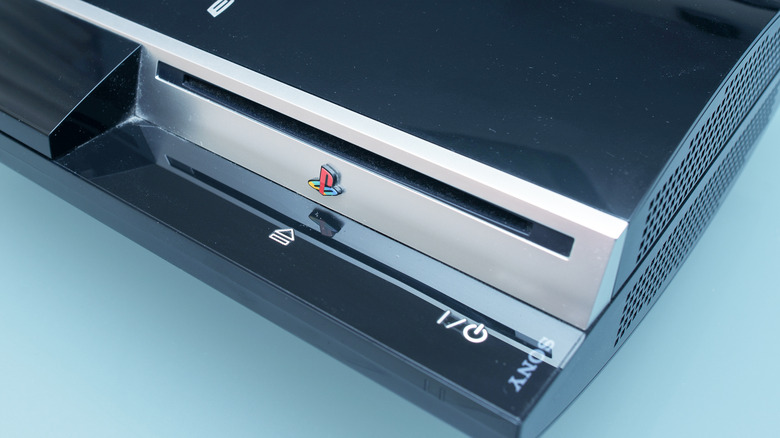4 Forgotten PSP Features That Are Pure Nostalgia
During the seventh generation of video game consoles in the early-to-mid 2000s, Sony's PlayStation 3 was waging war against the stalwart Xbox 360 and the money-printing Nintendo Wii. However, this was a war with multiple fronts: On the other side of the battlefield was a one-on-one between the PlayStation Portable, better known as the PSP, and Nintendo's other crown jewel, the Nintendo DS.
Although the PSP ultimately lost to the DS in terms of sales, it put up one heck of a fight. It had some excellent games in its library, of course, but what the PSP really had that the DS didn't was wider multimedia functionality and expanded features. To put it another way, the DS played games (and it was very good at that), but the PSP could play games, music, movies, comics, and more. It was an entire multimedia suite in one sleek, oblong package. Even if it didn't take the gold medal, it put on quite a show of its own. Here are some of the PSP's features that will take fans back to a simpler time, before every console had to provide these things.
The PSP was an MP3 player
In a time when the iPod reigned supreme in the music-player scene, the PSP was actually a surprisingly excellent MP3 player in its own right. You could just put music files right onto the handheld's memory stick, instead of having to futz with an external program like iTunes. Just plug it into your computer with a compatible USB cord, and the files are right there to adjust as you please.
Since you had all of the PSP's onboard controls at your fingertips, you also had much more control over your music's playback, allowing you to scan to the best bits of your favorite songs easily. Thanks to the PSP's Hold switch, which you could flick on under the power switch, you could also disable control inputs while listening, ensuring you didn't accidentally skip your songs while the console is in your pocket.
The PSP's music-playing functionality only got better in 2009 with the addition of Sony's SensMe framework. SensMe is a function that was already present in other Sony-branded music players at the time, and downloading its dedicated app on the PSP would allow it to organize your music into mood-based playlists.
The PSP could play movies
While the Nintendo DS had two screens, both of those screens only had a resolution of 256 x 192. The PSP, on the other hand, offered 480 x 272, which was basically the handheld console equivalent of high definition at the time. That sharper resolution was great for the console's more graphically-intensive games, yes, but it was also great for enjoying your favorite movies and television.
In addition to the usual game UMDs that were sold for the PSP, the console also had a line of movie and TV UMDs (effectively squished-down DVDs). You could watch the biggest movies of the day on the go, and in surprisingly good quality. Even if you didn't have any UMDs, you could also transfer movie files right onto the memory stick for onboard viewing. Granted, the stock memory stick could only hold maybe one movie at a time, but it was still a cool option.
The PSP could browse the internet
In the early 2000s, handheld consoles were still a separate class of personal electronics from something like a cell phone or digital planner. With the seventh generation, however, that gap began to narrow with the introduction of practical, non-gaming features. One of the most crucial of these features was the ability to browse the internet, which is one of the few sectors in which the PSP rather decisively beat the DS.
Right out of the box, the PSP had a built-in internet browser that could be used to cruise around the early-2000s web. Obviously, much like cellphones at the time, the PSP didn't exactly offer desktop-quality surfing. The browser was a little slow, and anything Flash-based was completely off the table. Still, with the ability to connect to any wireless access point, it was a handy way to quickly check simple text-based sites or email.
The PSP could connect to a PS3
Nowadays, Remote Play functionality comes standard on all PlayStation products, and it's all-encompassing, even connecting to things like smartphones and PCs. The very first PlayStation consoles to include the feature, however, were the PSP and PlayStation 3, and they could only connect to each other. This was effectively the precursor to one of PlayStation's most steadfast capabilities.
By connecting your PS3 to your PSP, you could use the latter as a portable terminal for the former. You could access your PS3's files and settings through the PSP, and even stream games from the PS3 to play on the PSP. Obviously, the PSP didn't have the required muscle to play any PS3 games, but the connection could be used to stream titles from the original PlayStation that were downloaded on the PS3. This functionality was greatly expanded upon with the release of the PS Vita, but let the record show that the PSP was doing it before it was cool.
